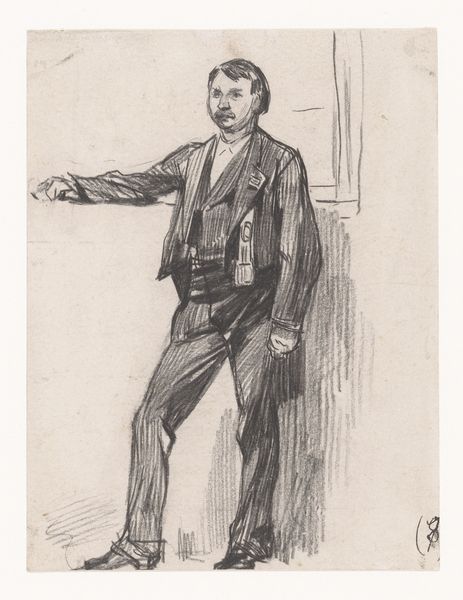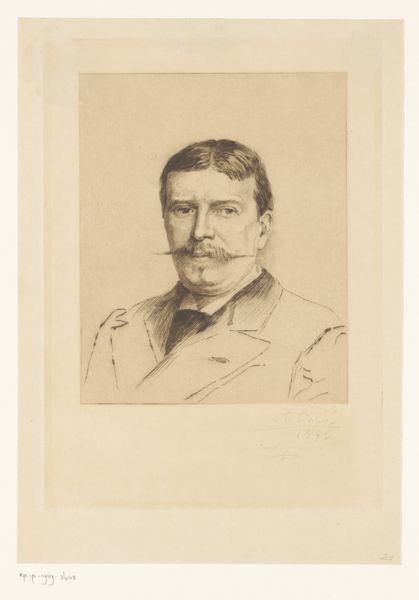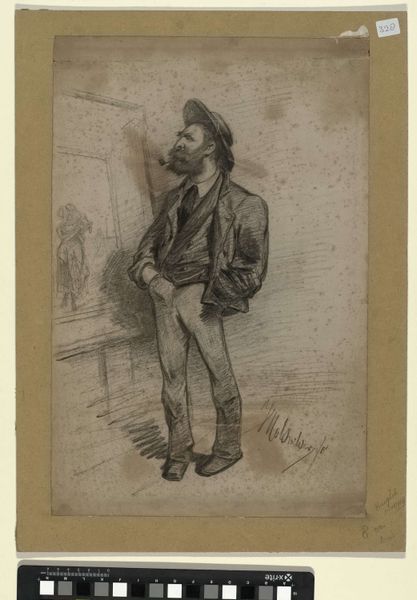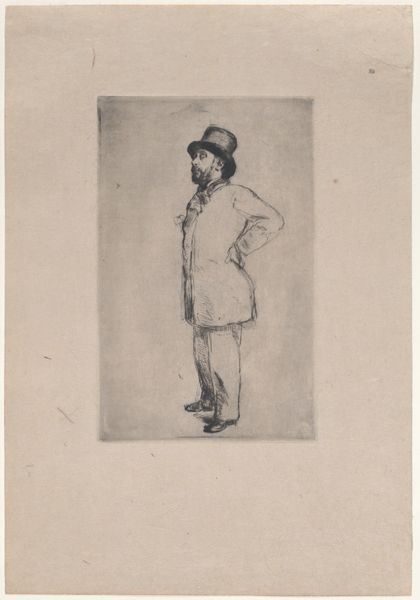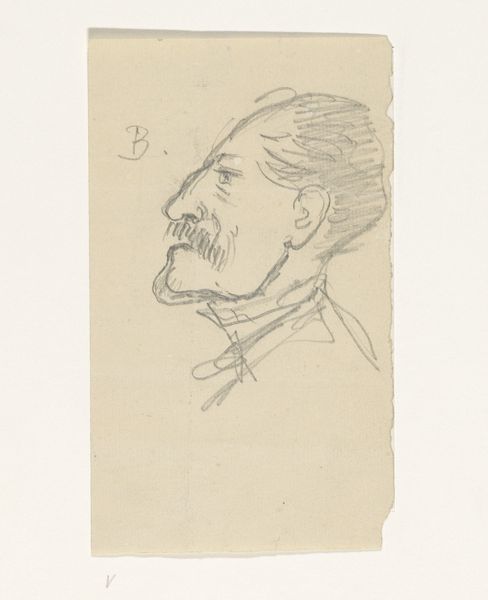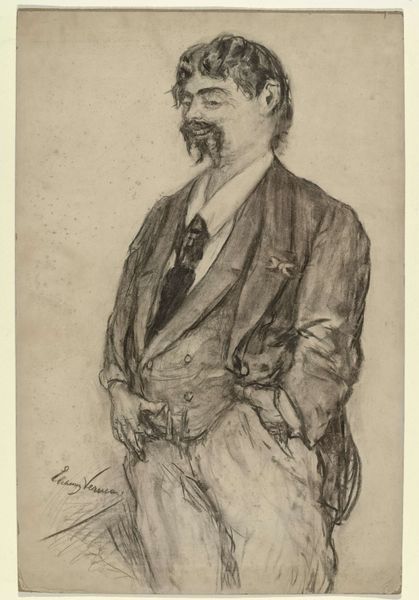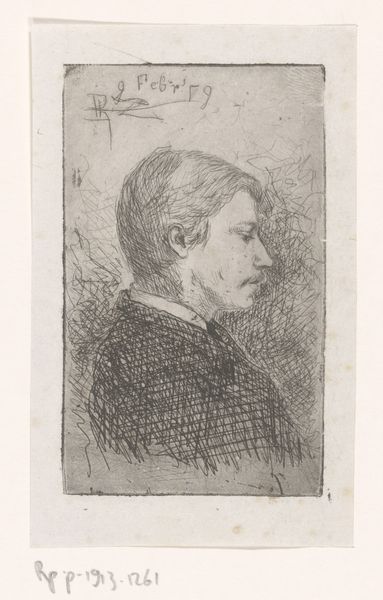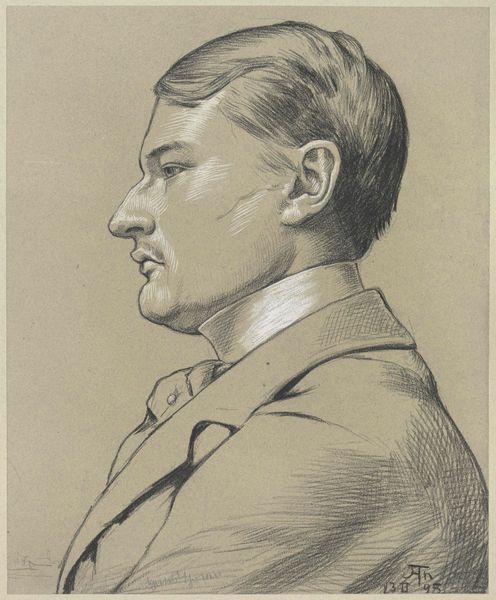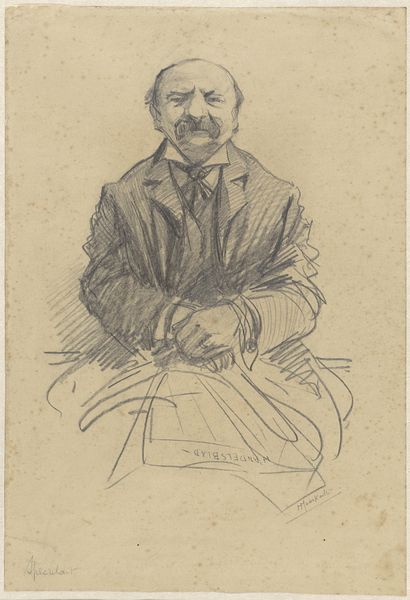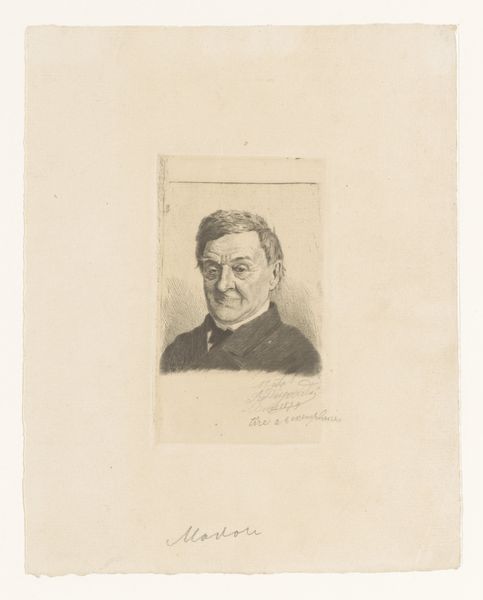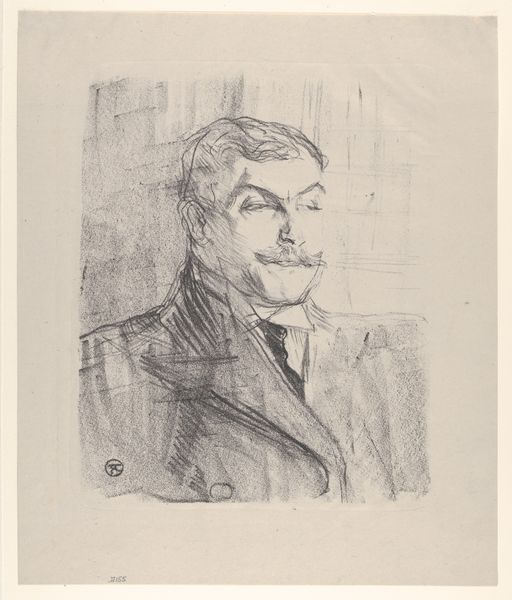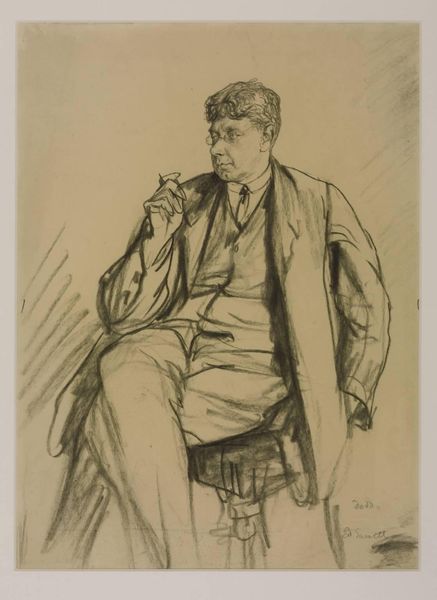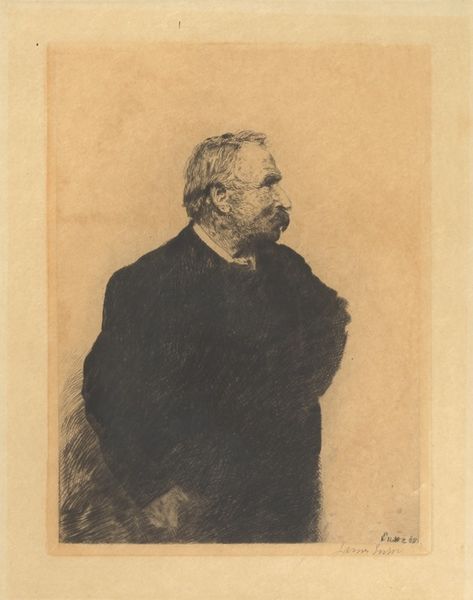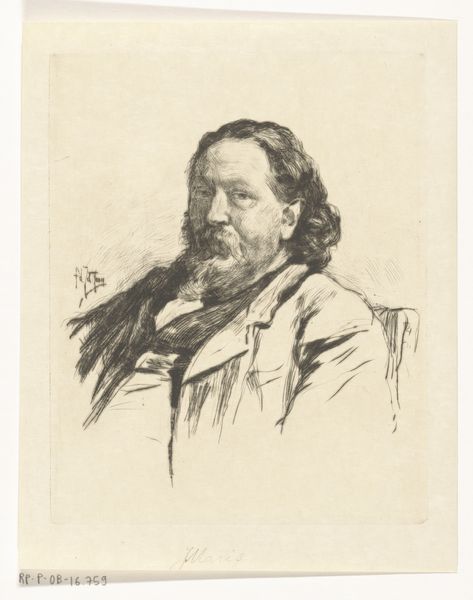
drawing, graphite
#
portrait
#
drawing
#
imaginative character sketch
#
light pencil work
#
pencil sketch
#
cartoon sketch
#
figuration
#
personal sketchbook
#
idea generation sketch
#
pen-ink sketch
#
graphite
#
sketchbook drawing
#
portrait drawing
#
storyboard and sketchbook work
Dimensions: height 235 mm, width 173 mm
Copyright: Rijks Museum: Open Domain
Curator: Pieter de Josselin de Jong created this drawing titled "Kamerbewaarder" in 1887. The Rijksmuseum is its current home. I’m particularly struck by how the artist chose graphite to capture what appears to be a very commonplace subject. What are your initial thoughts? Editor: My first impression is of the interplay of light and shadow achieved with minimal strokes. It gives the sitter a certain weight, both physical and perhaps psychological. The lines appear casually placed but result in a rather confident rendering. Curator: Yes, I think there’s an intentional duality there. He’s posed, certainly, but he also seems very much *at ease*. “Kamerbewaarder” translates to “room attendant,” but it’s less about service and more about guardianship, suggesting a certain status and role. Editor: And yet, consider the composition. The sitter is positioned slightly off-center, and the gaze doesn’t meet the viewer directly. Is it to suggest the transience, the fleeting nature, perhaps, of this kind of…well, symbolic authority? Curator: Intriguing. You're suggesting a potentially subversive narrative? Or perhaps it is not authority, but a comment on the domesticity of that authority? He is, after all, contained within a room, indicated by what looks like a doorway behind him. I also think about class. What does it mean that the artist immortalized a 'room attendant,' someone decidedly not among the elites? Editor: Precisely! And speaking of technique, look closely at the varying pressure applied to the graphite, creating depth and texture with almost minimal cross-hatching. He even lets sections remain bare, leaving much to our visual perception, rather than literal description. Curator: That minimalist technique also gives it a timelessness. We could easily place this ‘guardian’ across eras and contexts. It resonates with enduring societal dynamics. I can't help but wonder who he thought this man to be. Editor: De Josselin de Jong invites that kind of speculation, precisely through this calculated absence of detail, and attention to form, wouldn't you agree? It remains a compelling study of the visible and invisible, of what is depicted, and left for interpretation. Curator: A wonderful and insightful breakdown; it certainly changes how I understand this portrait, knowing that even with the simplest lines, it embodies layers of symbolic thought and practice. Thank you for your attention to detail. Editor: The pleasure was mine, exploring this deceptively simple, profoundly evocative artwork.
Comments
No comments
Be the first to comment and join the conversation on the ultimate creative platform.
